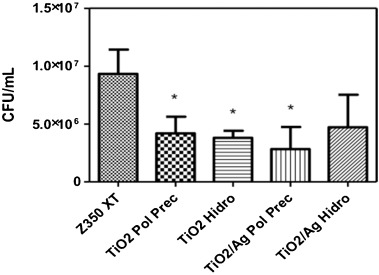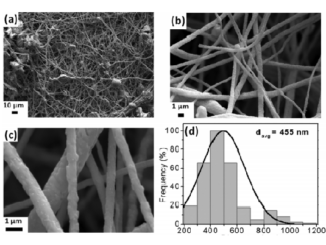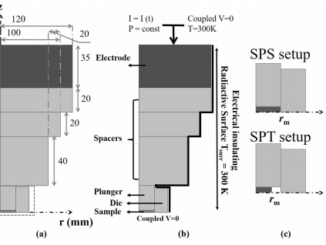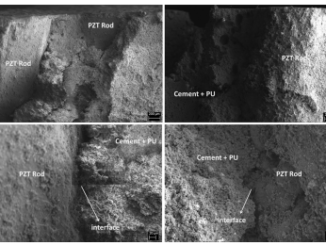
Titanium dioxide and modified titanium dioxide by silver nanoparticles as an anti biofilm filler content for composite resins
Abstract:
Objective: The aim of this study was to evaluate the antibacterial activity of a composite resin modified by TiO2 and TiO2/Ag nanoparticles and their influence over different properties.
Methods: TiO2 and TiO2/Ag NPs were synthesized by polymeric precursor and microwave-assisted hydrothermal methods and then, characterized by different techniques. Direct contact test was performed using Filtek™ Z350XT blended with 0.5; 1 and 2% (wt.) of NPs against Streptococcus mutans to determine the best concentration to the other tests. After that, the modified composite resin was tested against S. mutans 7-day biofilm (CFU/mL). Also, compressive and diametral tensile strength (n = 40), degree of conversion (n = 25) and surface roughness (n = 50) was performed. The data were analyzed by ANOVA and Tukey’s test for multiple comparison at 5% significance level.
Results: The direct contact test demonstrates that by increasing the nanoparticle content, the bacterial growth is significantly reduceed (p < 0.05). The inclusion of 2% of TiO2/Ag NPs significantly decreased (p < 0.05) the biofilm accumulation of S. mutans on the composite resin surface compared to the control Group. The TiO2 NPs treated with an organosilane increased compressive strength of composite resin (p < 0.05). Degree of conversion remained unchanged (p > 0.05) and the surface roughness increased with the NPs (p < 0.05), except for the TiO2 by polymeric precursor Group (p > 0.05).
Significance: The development of an antibacterial dental restorative material that hinder S. mutans biofilm without sacrificing the mechanical and physical properties is desirable in dental material science.
Author(s): Dias, H. B.; Bernardi, M. I. B.; Bauab, T. M.; et al.
Dental Materials
Volume: 35 Issue: 2 Pages: E36-E46 Published: 2019
DOI: https://doi.org/10.1016/j.dental.2018.11.002




